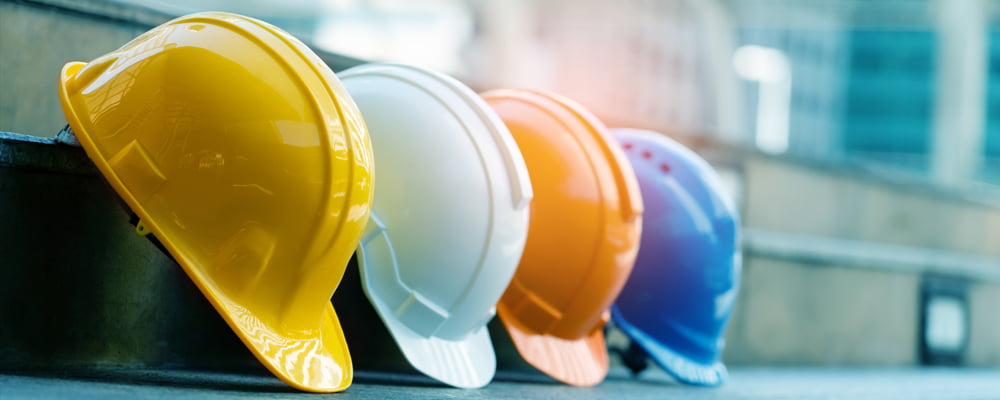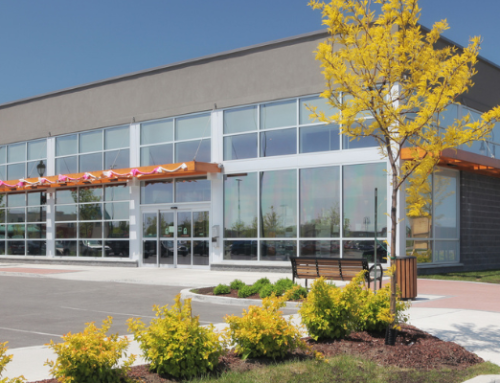Construction may be an essential industry, but that didn’t stop dozens of states from shutting down or limiting construction activities last year. Many projects were stalled or cancelled between March and May 2020, squeezing an already tight industry to its breaking point. While the industry rebounded nicely over the summer and vaccines are beginning to be distributed, no one knows for sure what will happen next.
Even in a post-coronavirus economy, the potential for another public health crisis or national emergency remains elevated. What can construction companies do to protect their assets and plan for another site shutdown?
Document Project Status and COVID-19 Impact
One lesson learned was to never be caught off guard. Contractors and owners should be keeping good records of project status. This can include but is not limited to daily notes, site photos, and team communications. Maintain a checklist of supplies and materials used as well as what’s still on-site.
It’s also a good idea to maintain an accurate percentage of completion. Maintain logs of costs incurred, units completed, or labor hours, whichever makes the most sense and is consistent with existing accounting standards. Normally, this calculation is done on a monthly basis, but it may be wise to do more frequent analyses so there is a better chance of capturing as much revenue as possible.
In addition to documenting project status, contractors should be prepared to keep a running list of the material impacts of a jobsite closure or project delay. If a claim is submitted down the road, this type of evidence will be useful.
Review Contracts
When COVID-19 began, construction companies went back to their contracts. While many of these may have included a catch-all provision, now it’s more important than ever to ensure that contract language is precise and clear.
Before a shutdown occurs, contractors should be evaluating whether the current force majeure clause provides adequate protection in the event of a project cancellation or delay. Another aspect of contract coverage concerns coverage. If a project is delayed or canceled due to COVID-19 or any other government mandate, contractors should know ahead of time what they’re entitled to and what they’re responsible for. It’s prudent to work in some kind of compensation relief, perhaps tied to the percentage of completion, as well as protections for escalated costs of overtime labor or materials.
Be familiar with deadlines, both in terms of the contract and the job site. Just because a job site is shut down doesn’t mean the timeframe for the project also stops. Review the contract and stay in touch with the site owner to prevent any misunderstandings or unintended litigation.
Address Weather and Security Concerns
If a project is suddenly stopped for days or weeks, can the site endure extreme weather and security risks? In normal times, this involves securing the area, installing appropriate lighting and signage, using video cameras, and GPS tracking on equipment. Preventative weather treatments can range from winterizing equipment for long breaks in work to securing a dry, elevated area to store materials that must be left on-site.
Create an action plan for severe weather events when the jobsite is vacated. Ensure that an unfinished building can maintain air and water tightness. Plan for site security ahead of time, if needed.
There’s also the question of equipment. Rental equipment or machinery may need to be returned until further notice to protect against potential damage or other liabilities of leaving large equipment on-site.
Focus on Employee Retention
Just because the site is shut down doesn’t mean the team needs to remain apart. Video conference meetings and other methods of connecting with the team can (and should) still happen, and for a few reasons:
- Maintain employee engagement and morale.
- Ensure that work can begin right away once restrictions are lifted.
- Encourage skilled workers to stay on the job.
As anyone in the construction industry knows, getting the work is one thing. Finding quality craftsmen to do the work is another issue, and COVID-19 caused thousands to leave construction. In the short-term, there are options to keep payroll going. The Paycheck Protection Program was an effective way to keep people on the payroll last year. If a construction company lost 25 percent of its gross revenue in any quarter of 2020 compared to 2019, they could be eligible for second draw PPP loans. Plus, the Employee Retention Tax Credit was extended and expanded for the first half of 2021.
Finish Early
This advice may be difficult to implement in practice. If COVID-19 case numbers are increasing and there’s talk of possible shutdowns or restrictions, completing the project early is one way to avoid on-site shutdown issues. There could be added costs to do this, and contractors will need to weigh current circumstances carefully.
Look Ahead
COVID-19 wreaked havoc on global construction and manufacturing supply chains. Rising material costs and substantial delays are two of the main issues that contractors have had to deal with. If a jobsite is shut down again, use that time to safeguard the supply chain. Look ahead to future projects – or the current one – and plan for materials and supplies. This can be especially useful if a construction boom happens once vaccine are widely distributed; upfront costs now could mean the ability to capitalize on future projects.
The downtime can also be used to evaluate aspects of the project that could be improved. Talk with the project manager and re-assess how things are going. Conduct remote team training as necessary. Consider whether there are new service offerings to develop or continuing education courses that could benefit the team. As the saying goes, ‘don’t let a crisis go to waste.’
The weeks and months ahead are uncertain but cautiously optimistic. A federal infrastructure bill would provide much-needed financial relief and promises of construction work. Even in the existing COVID-19 legislation, the Consolidated Appropriations Act, several parts benefit the construction industry.
An unexpected construction site shutdown can have disastrous effects for the contractor. Fortunately, we’ve been through what is hopefully the worst of COVID-19 by now; regardless of whether the threat is known or unknown, it’s still important for contractors to have a plan to protect the jobsite – and their future revenue potential.
Questions about what to expect in Virginia, North Carolina and Maryland’s construction marketplace? Contact PBMares’ Construction and Real Estate Team Leader and Partner Jennifer French, CPA.





